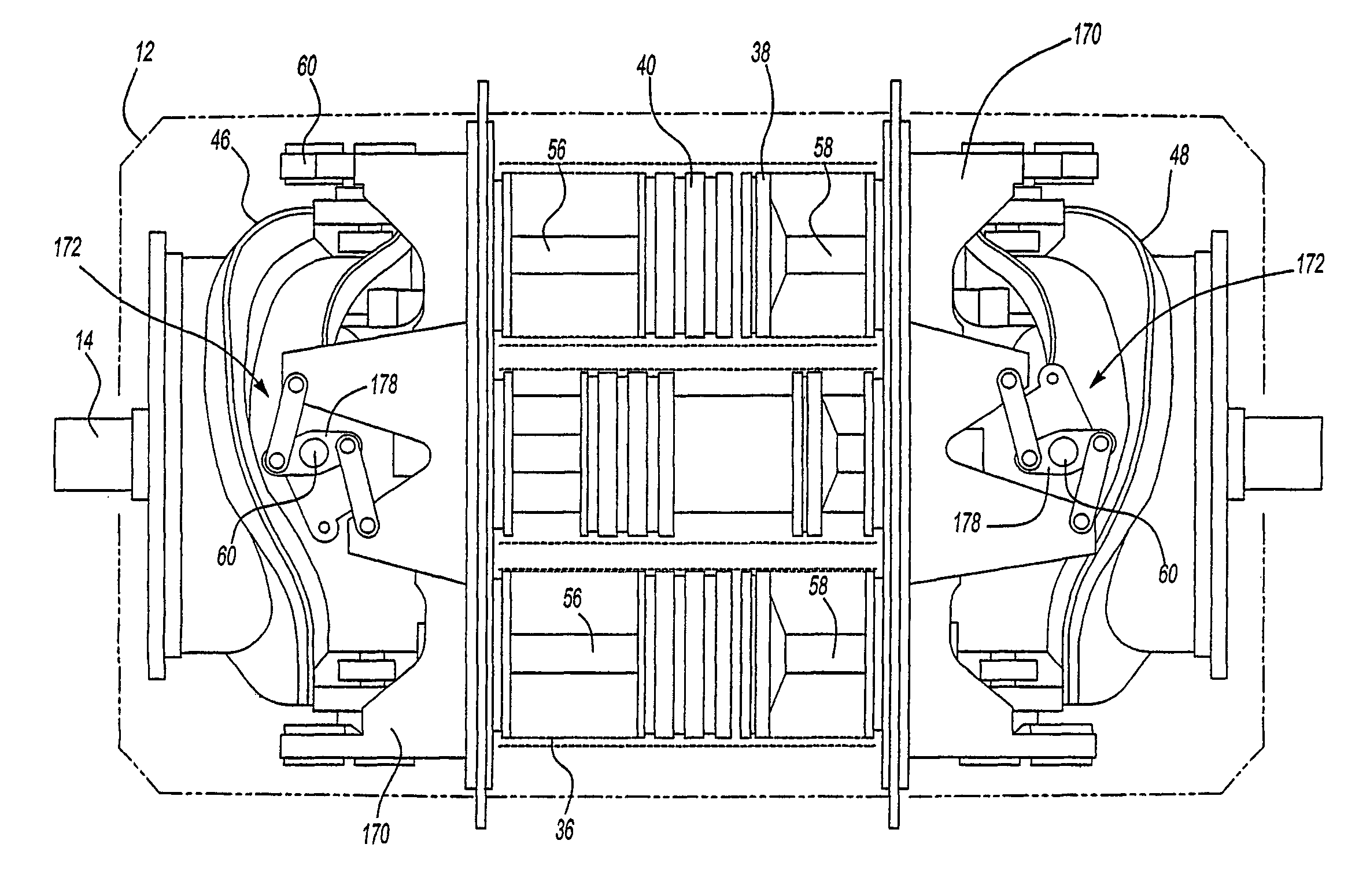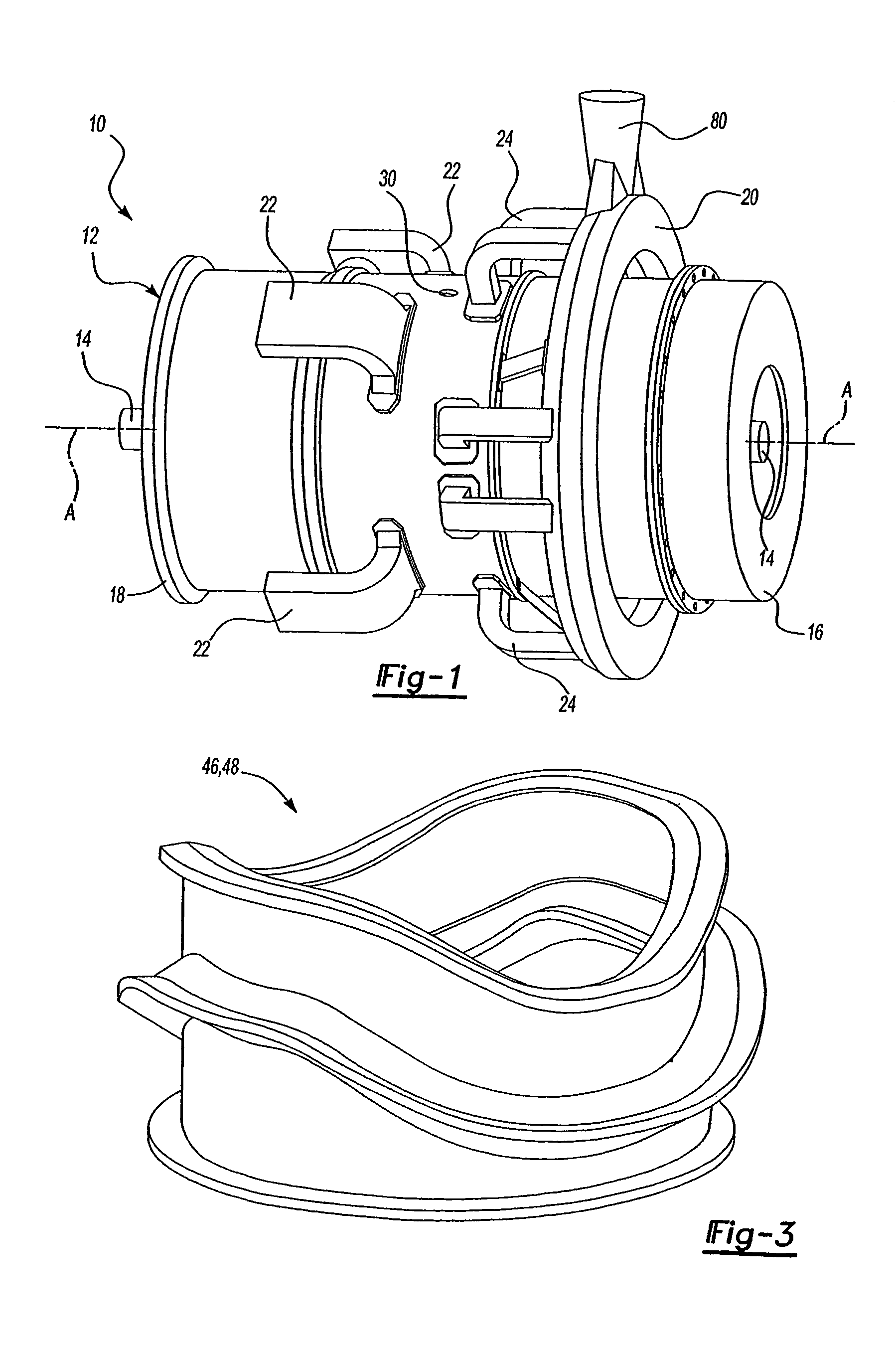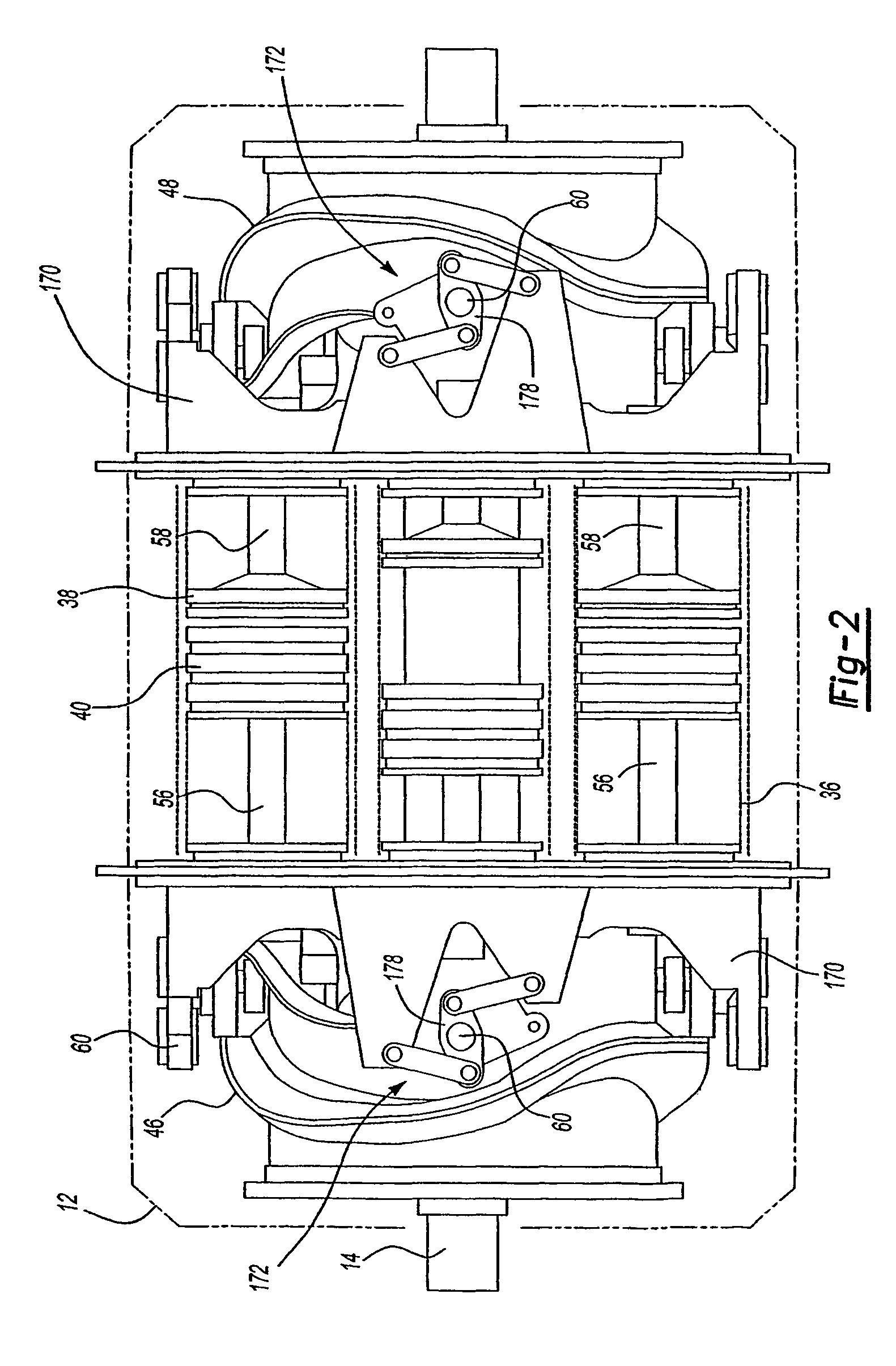Internal combustion engine using opposed pistons
a technology of opposed pistons and internal combustion engines, which is applied in the direction of combustion engines, cylinders, positive displacement engines, etc., can solve the problems of low conductivity and high thermal expansion coefficient of hollow tubes, and achieve low weight to power ratio, low emissions, and low fuel consumption.
- Summary
- Abstract
- Description
- Claims
- Application Information
AI Technical Summary
Benefits of technology
Problems solved by technology
Method used
Image
Examples
Embodiment Construction
[0048]In its preferred embodiment, the engine of the present invention as described herein is configured with four (4) cylinders and eight (8) pistons and each paired diametrically opposed piston sets are compressing and expanding axi-symmetrically, so as to minimize or eliminate unbalance or out of plane loads at any time during the engines operating envelope for providing a relatively vibration free engine. Since each piston set “fires” twice per output shaft revolution, it produces twice the torque at half the shaft RPM. While this invention is described in the preferred embodiment to include specific parameters, it will be appreciated by one skilled in this art that other parameters including the number of pistons and attendant cylinders could be used without departing from the scope of this invention. It will be appreciated that two opposing pistons in a single cylinder will constitute the minimum number of pistons and cylinders, it will also be appreciated that more or less th...
PUM
 Login to View More
Login to View More Abstract
Description
Claims
Application Information
 Login to View More
Login to View More - R&D
- Intellectual Property
- Life Sciences
- Materials
- Tech Scout
- Unparalleled Data Quality
- Higher Quality Content
- 60% Fewer Hallucinations
Browse by: Latest US Patents, China's latest patents, Technical Efficacy Thesaurus, Application Domain, Technology Topic, Popular Technical Reports.
© 2025 PatSnap. All rights reserved.Legal|Privacy policy|Modern Slavery Act Transparency Statement|Sitemap|About US| Contact US: help@patsnap.com



